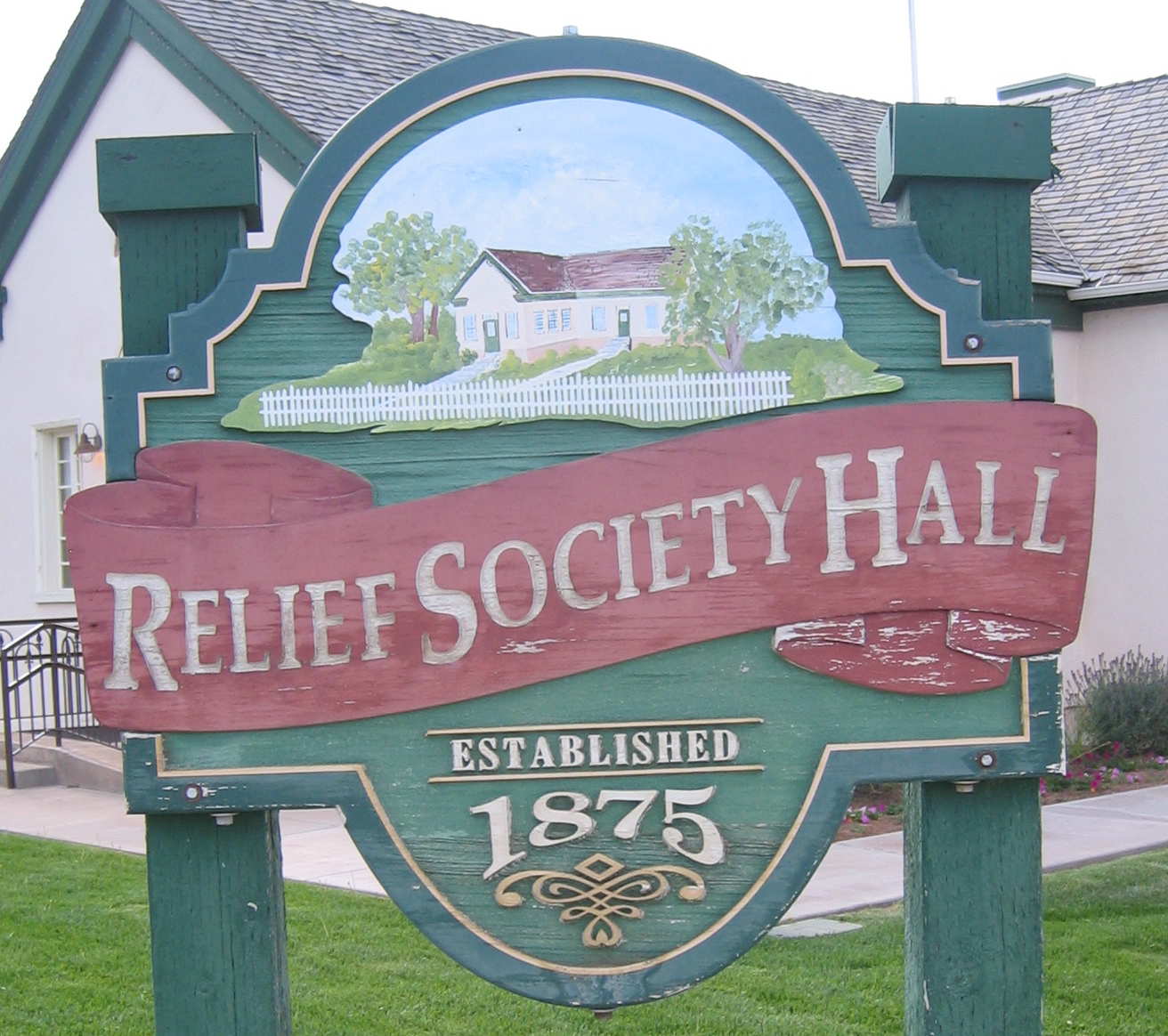
WASHINGTON COUNTY HISTORICAL SOCIETY (Washington County, Utah)
WASHINGTON RELIEF SOCIETY HOUSE
Washington, Utah
LOCATION
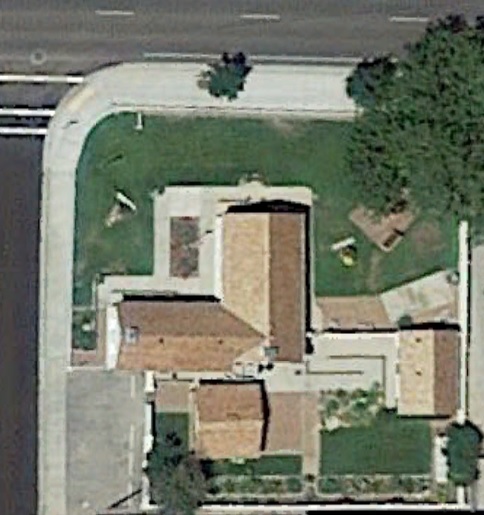
|
Southeast corner of Telegraph Street & 100 West
Washington, Utah 37° 7' 48.13" North Latitude, 113° 30' 40.59" West Longitude 37.1300° North Latitude, 113.5113° West Longitude 2,780 feet (847 meters) MSL For scheduling and rental of this facility, contact Don or Rebecca Young at (435)656-1590. For the rental agreement, click here. |
DESCRIPTION
The Washington Relief Society fell has served variously as meetinghouse, post office, co-op store and mortuary since its construction in 1875. The oldest part of the single story structure, the east wing, is adobe. In ca 1904 the west wing was added, forming an "L" plan. The entire structure is stuccoed.The building represents a style of architecture that prevailed in Utah during the earliest years of settlement. Simple classical elements applied to vernacular forms created a Greek Revival mode that was the first allusion to "high style" architecture here. It was preceeded by vernacular forms and supplanted by later Victorian styles.
Small, rectangular buildings with low gable roofs, gable end street facades, typically symmetrical facade piercing and molded cornices with gable end returns characterize Greek Revival architecture in Utah. The form was common for all secular and religious buildings in early Utah including chapels, tabernacles, co-ops and cash stores, tithing offices, post offices, court houses, town halls, and relief society halls. The Washington Ralief Society is a typical example.
Ihe Washington Relief Society Hall documents the wide use in early Utah of adobe, a serviceable, economical and easily available building material. It also helps illustrate a transition from purely vernacular types to the deliberate integration of selected stylistic elements into an existing folk tradition.
HISTORY
Though once predominant, few Greek Revival buildings survive in Utah. The impermanent nature and small scale of many of them and the changing taste which favored Victorian forms caused most to be lost. The Washington Relief Society Hall is therefore an important extant example of the Greek Revival mode and of the first allusions to a specific architectural style in the movement away from vernacular forms. It is the oldest extant public building in Washington, erected at great sacrifice by a community still struggling to survive.The high cost of freighting manufactured goods to Utah, the scarcity of cash to pay for them, and the reluctance to rely upon "Gentile" suppliers all urged a policy of self-sufficiency. The prospect for cotton shortage caused by strife between North and South led IDS Church President Brigham Young to direct the establishment of a Cotton Mission in the "Warm Valley" of the Virgin River in Southern Utah. In the spring of 1857 the first group of colonists arrived at the site of Washington City. The cotton cultivators survived malaria and recurring, destructive flash floods in addition to lean diets and Indian conflicts and in 1866 a cotton mill was dedicated.
The Relief Society of Washington Ward was organized in 1868 after the ward was separated out of Harmony Ward. In 1875 a small adobe hall, now the east wing, was built. This space was rented to the Washington Cooperative Association store; the Relief Society members met in homes and applied the rent to relief of the needy. The post office, customarily lodged in the home of the postmaster, operated from the Co-op Store for several years prior to World War I.
Between 1903 and 1905 the west wing was added, allowing the members to resume their meetings there. The relocation of the Co-op Store after World War I the original wing to the use of Society members. Members of the society made clothing and quilts for those in need, conducted fund raising bazaars and lunches, carried on Church work, and through Itold War II laid out the dead for burial. In 1960 the IDS Church sold the property. It is still in use as a meeting place for civic and service organizations.
Put on the National Register of Historic Places (#1980993991) on August 27, 1980.
PHOTOS
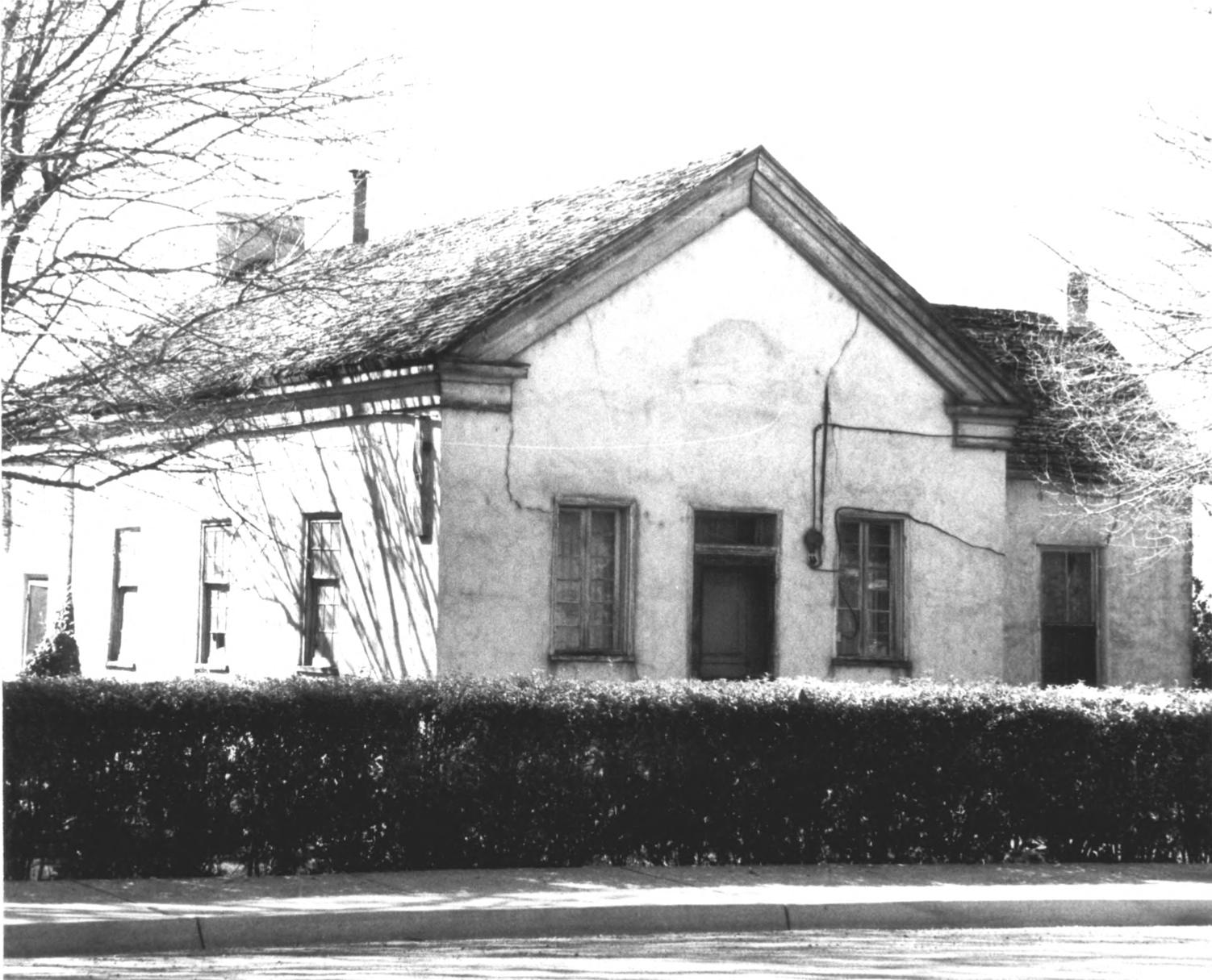 North & east sides of the building (Wilson G. Martin, March 1980) |
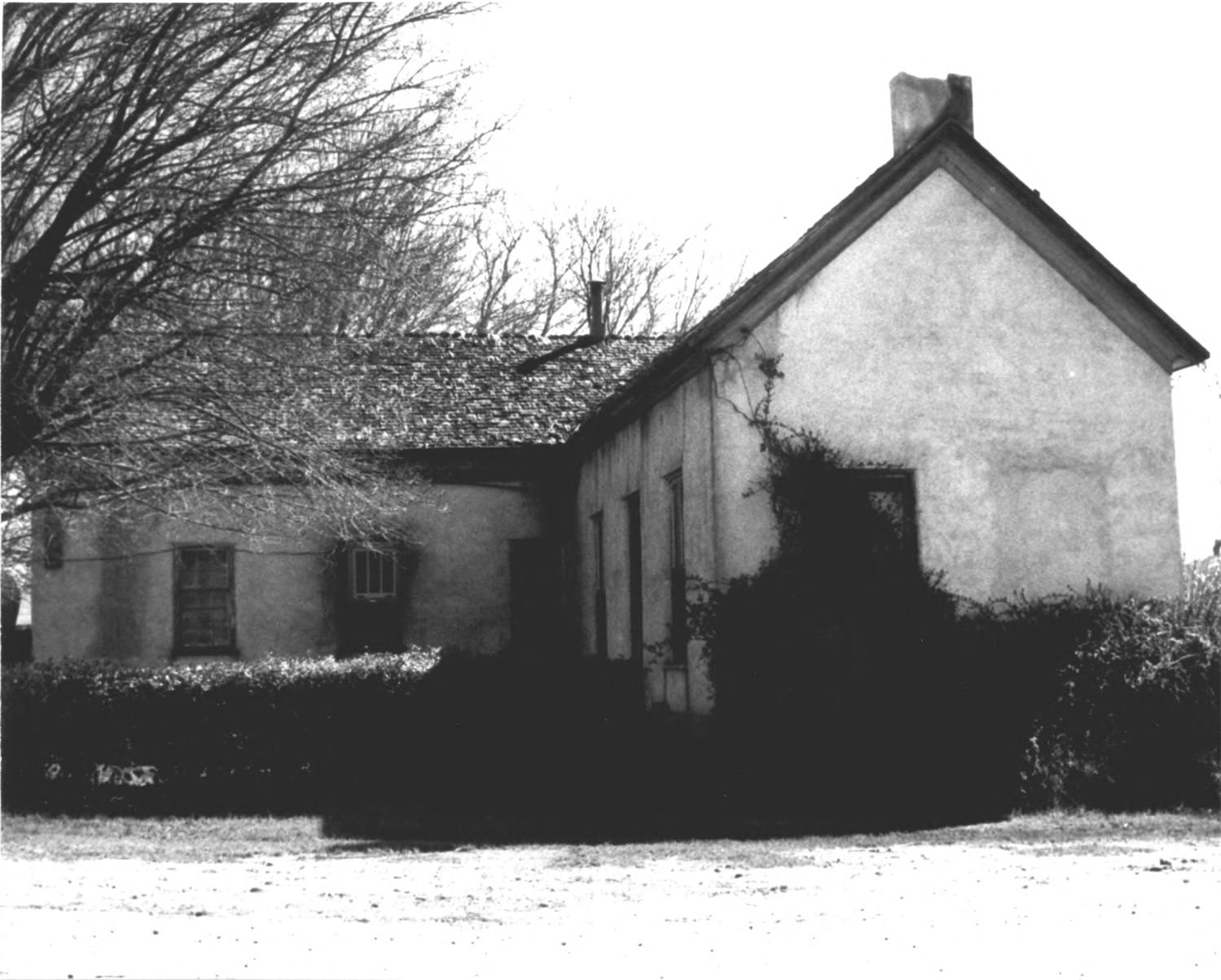 West side of the building (Wilson G. Martin, March 1980) |
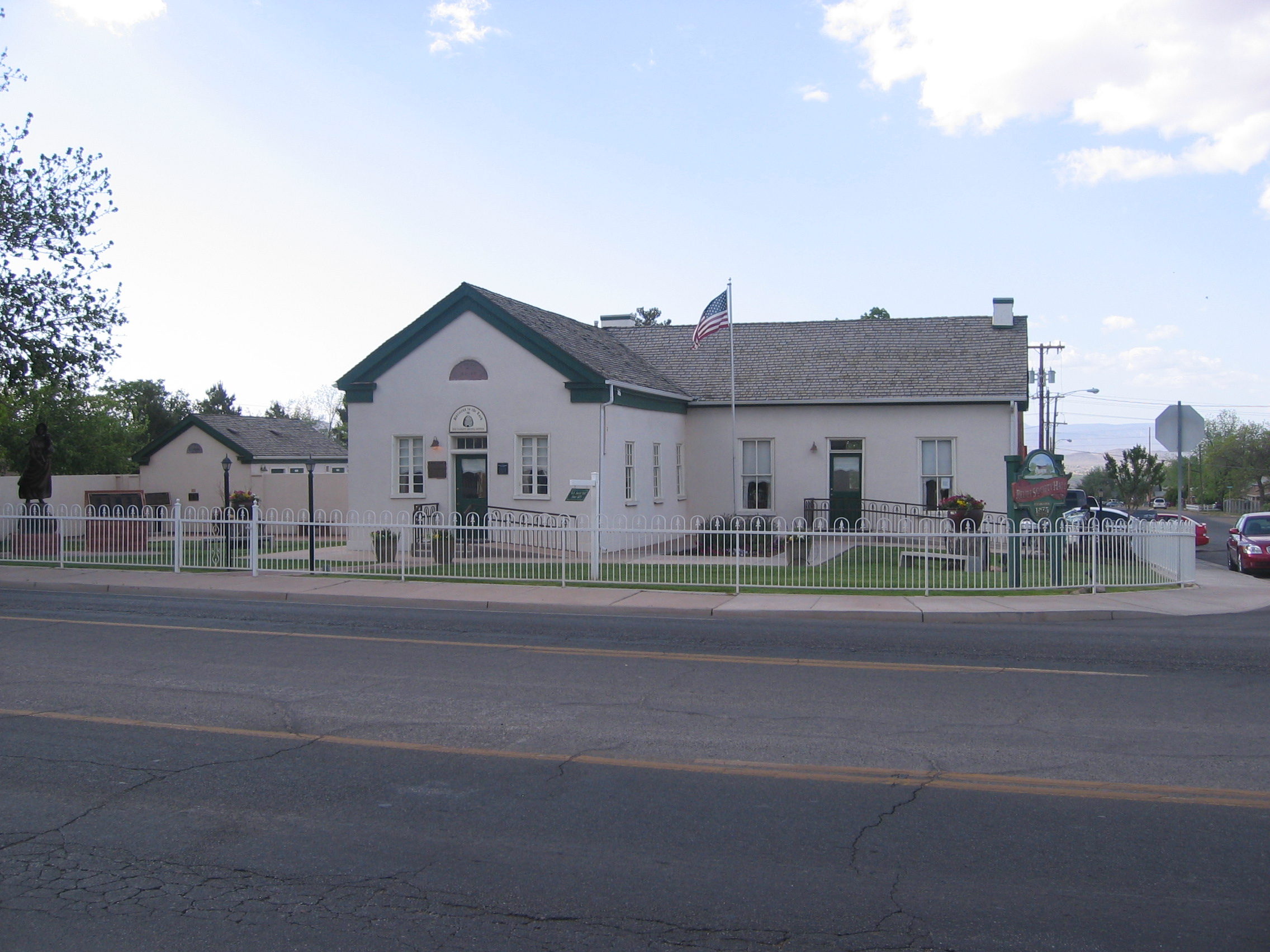 WCHS-00119 Broad view (April 25, 2009) |
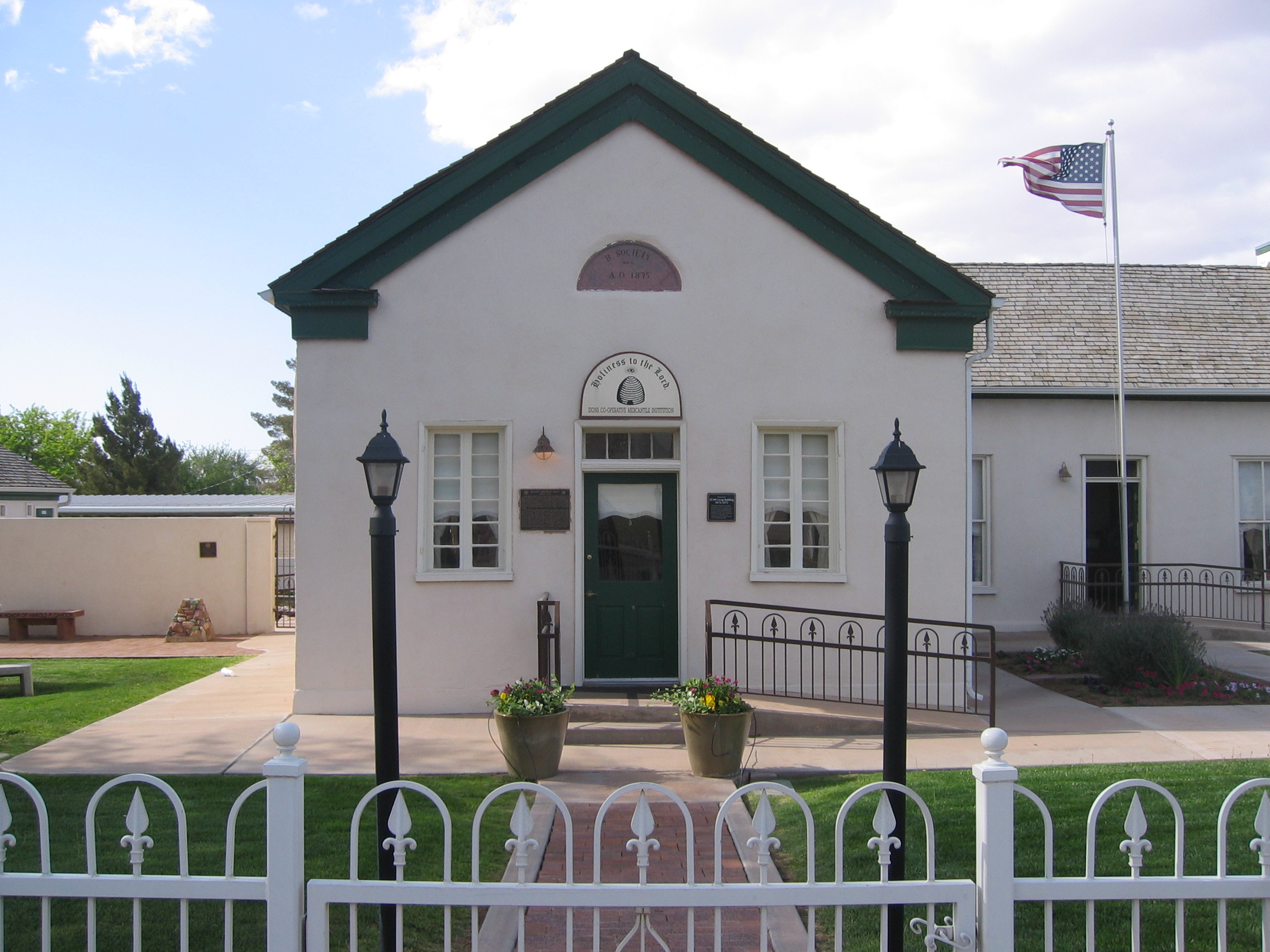 WCHS-00117 Front view (April 25, 2009) |
Other WCHS photos:
WCHS-00116 Photo of the Relief Society Hall in Washington
WCHS-00118 Photo of the Relief Society Hall in Washington
WCHS-00120 Photo of the Relief Society Hall sign in Washington
WCHS-03599 Watercolor painting of the Washington Relief Society House
WCHS-03600 Watercolor painting of the Washington Relief Society House
WCHS-03601 Watercolor painting of the Washington Relief Society House
WCHS-03602 Watercolor painting of the Washington Relief Society House
Other photos on the web:
Photos from the National Register of Historic Places nomination form